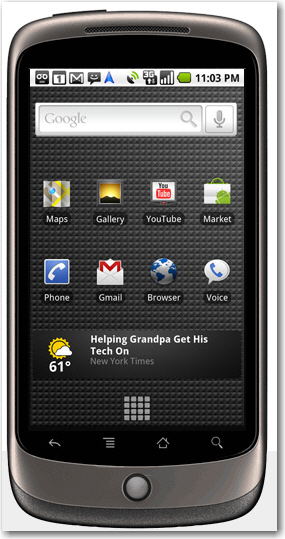2009 proved again that wildland firefighting is still a very hazardous occupation. Here is a list of the wildland fire related line of duty deaths of which we are aware. We make no claim that it is a complete or official tally, but we did the best we could. If you are aware of any that we missed, let us know.
Jan. 4: A father and son, driving separate fire department vehicles, collided in dense smoke while responding to a vegetation fire. John C. Meyers of the Wesley FD in Oklohoma, died.
https://wildfiretoday.com/2009/01/06/follow-up-on-oklahoma-fatality/
Feb. 17: A firefighter with the Australian Capital Territories Fire Brigade in Australia was killed when a tree fell onto a fire apparatus. https://wildfiretoday.com/2009/02/17/australian-firefighter-killed-by-falling-tree/
Feb. 20: John Adams with the Silver City VFD in Oklahoma collapsed and died while working on a vegetation fire near Mannford, OK.
https://wildfiretoday.com/2009/02/21/oklahoma-firefighter-dies-while-fighting-fire/
Mar. 8: Pilot Roger Hershner died when his helicopter crashed in Kansas while ferrying the ship to the location of a fire contract in Virginia.
https://wildfiretoday.com/2009/03/09/helicopter-pilot-killed-in-kansas-crash/
Mar.15: Lt. Roger Vorwark collapsed and died from an apparent heart attack while working on a vegetation fire in Odessa, Missouri.
https://wildfiretoday.com/2009/03/16/missouri-lodd/
Mar. 21: Gregory Carroll Cooke went into cardiac arrest and died while working on a vegetation fire near Whitakers, North Carolina.
https://wildfiretoday.com/2009/03/24/wildfire-news-march-24/
Apr. 8: Pilot Heath Van Handel, a DNR employee, died when his spotter plane crashed while working over a fire near Cary, Wisconsin.
https://wildfiretoday.com/2009/04/08/wisconsin-fire-spotter-plane-crashes-killing-pilot/
Apr. 8: New Zealand firefighter killed by falling branch
https://wildfiretoday.com/2009/04/08/new-zealand-firefighter-killed-by-falling-branch/
Apr. 25: P2V Air tanker crash kills 3 near Toole, Utah: Tom Risk, Pilot, of Littleton CA, Mike Flynn, co-pilot, of Alamogordo, NM and Brian Buss ,Crew chief of Alberton Montana.
https://wildfiretoday.com/2009/04/27/24-hour-briefing-on-air-tanker-crash/
May 15: Chief Trent Hill of the Keswick Valley FD, New Brunswick, Canada, died from an apparent heart attack while working on a vegetation fire.
https://wildfiretoday.com/2009/05/17/wildfire-news-may-17/
Jun. 18: Two people were killed when a firefighting helicopter crashed into a lake in southwestern Turkey.
https://wildfiretoday.com/2009/06/19/two-bodies-of-helicopter-crash-victims-found-in-turkey/
Jun. 26: BLM firefighter Brett Stearns was killed by a falling tree while working on a hazard-tree removal project 15 miles northeast of Craig, Colorado.
https://wildfiretoday.com/2009/06/28/colorado-blm-firefighter-killed-in-falling-accident/
Jul 21-23: Five firefighters died while working on vegetation fires in the north of Spain.
https://wildfiretoday.com/2009/07/22/four-firefighters-killed-in-spain/
https://wildfiretoday.com/2009/07/23/another-firefighter-dies-in-spain/
Jul. 21: Thomas Marovich died in a heli-rappelling training accident on the Backbone fire near Willowcreek, California.
https://wildfiretoday.com/2009/07/21/fatal-accident-during-training-at-backbone-fire/
Jul. 29: A bulldozer operator was killed on a fire in Spain.
https://wildfiretoday.com/2009/07/29/dozer-operator-killed-on-spanish-fire/
Aug. 14: Pilot Robert Christopher Woodhead was killed when his helicopter crashed into the Fraser River in British Columbia, Canada.
https://wildfiretoday.com/2009/08/15/b-c-firefighting-helicopter-crashes-into-river-pilot-missing/
Aug. 20: Pilot Dave Jamsa died when his single engine air tanker crashed while working on the Hoyt fire 25 miles northeast of Reno, Nevada.
https://wildfiretoday.com/2009/08/21/air-tanker-crash-in-nevada-kills-pilot/
Aug. 27: The pilot of an air tanker was killed while working on a fire on the Ionian Sea island of Kefalonia near Greece.
https://wildfiretoday.com/2009/08/27/air-tanker-crashes-in-greece-killing-pilot/
Aug. 31: Two Los Angeles County firefighters, Capt. Tedmund D. Hall, and Firefighter Specialist Arnaldo Quinones, were killed when their vehicle ran off the road and was burned over on the Station fire.
https://wildfiretoday.com/2009/09/01/preliminary-information-about-the-fallen-lacfd-firefighters/
Dec. 9; New South Wales firefighter, Aaron Harber, killed in helicopter crash
https://wildfiretoday.com/2009/12/10/friends-honor-nsw-park-ranger/
Our sincere condolences to the families and co-workers of all of these firefighters.
And, as usual, “Let’s Be Careful Out There“.

 Google introduced their new new
Google introduced their new new 